︎
LEARNING CENTER
︎
Discover helpful fundamentals for creating & producing more responsibly in this era.

In the News
︎
The New York Times — March 2019
The Dieline — April 2019
NPR — August 2019
National Geographic — August 2019
Why a Big Shift is Needed
︎
As Costs Skyrocket, More U.S. Cities Stop Recycling
The New York Times — March 2019
Why Packaging Designers Should Visit a Recycling Facility
The Dieline — April 2019
U.S. Recycling Industry is Struggling to Figure Out a Future Without China
NPR — August 2019
Eat Your Food, and the Package Too
National Geographic — August 2019
Inspiration & Guidance—
Creating Responsibly:
A Practical Guide
Sourcing sustainable materials is just one way to create more consciously. We look to a few existing brands for additional guidance.
A Practical Guide
Sourcing sustainable materials is just one way to create more consciously. We look to a few existing brands for additional guidance.
Current State —
Decoding Paper Recycling
Paper might be the most widely recycled material, but there’s no one-size-fits-all approach to giving it a second life. To simplify matters, we’re breaking down what you need to know.
Words by Margaret Rhodes.
Research by Alice May Du.
Circular Design 101
With a global population of over 7 billion (and growing) and a planet of finite resources, it’s clear our current linear economy no longer serves us.
Posted: November 2019
What do we mean by a linear economy?
We have a widespread, economic pattern around the world of extracting resources from the planet, turning them into something of value, consuming and using them, and then simply tossing them out. In the end, that leaves us with a lot of waste and a depleted planet.
From this awareness comes the concept of the circular economy. By keeping the resources we extract “in play” longer, as if in a continuous loop, we can reduce our consumption of the Earth’s finite resources while simultaneously reducing our waste.
The Ellen MacArthur Foundation champions this new economic perspective and argues for the important role creativity and design play, deeming it circular design.
We turn to the experts, who explain it best through these two videos created by the Ellen MacArthur Foundation:
Re-thinking Progress:
The Circular Economy
Tim Brown:
Design & The Circular Economy
Highlights:
︎ We have a responsibility to design not just for a product’s use but for its end of life, as well.
︎ How can what we create continue to be reused or repurposed? How can its existence be circular?
Interested to know more? Check out The Circular Design Guide, a collaboration between IDEO and Ellen MacArthur Foundation.
Next article:
Creating Responsibly: A Practical Guide
We have a widespread, economic pattern around the world of extracting resources from the planet, turning them into something of value, consuming and using them, and then simply tossing them out. In the end, that leaves us with a lot of waste and a depleted planet.
From this awareness comes the concept of the circular economy. By keeping the resources we extract “in play” longer, as if in a continuous loop, we can reduce our consumption of the Earth’s finite resources while simultaneously reducing our waste.
The Ellen MacArthur Foundation champions this new economic perspective and argues for the important role creativity and design play, deeming it circular design.
We turn to the experts, who explain it best through these two videos created by the Ellen MacArthur Foundation:
Re-thinking Progress:
The Circular Economy
Tim Brown:
Design & The Circular Economy
Highlights:
︎ We have a responsibility to design not just for a product’s use but for its end of life, as well.
︎ How can what we create continue to be reused or repurposed? How can its existence be circular?
Interested to know more? Check out The Circular Design Guide, a collaboration between IDEO and Ellen MacArthur Foundation.
Next article:
Creating Responsibly: A Practical Guide
Creating Responsibly:
A Practical Guide
Reduce, reuse, recycle: we’ve heard it over and over. But when words become as ubiquitous as those, they can lose their original meaning and strength.
In an effort to breathe a little life back into the saying, we’ve rounded up a few design examples that illustrate what it means to create more responsibly in support of our planet.
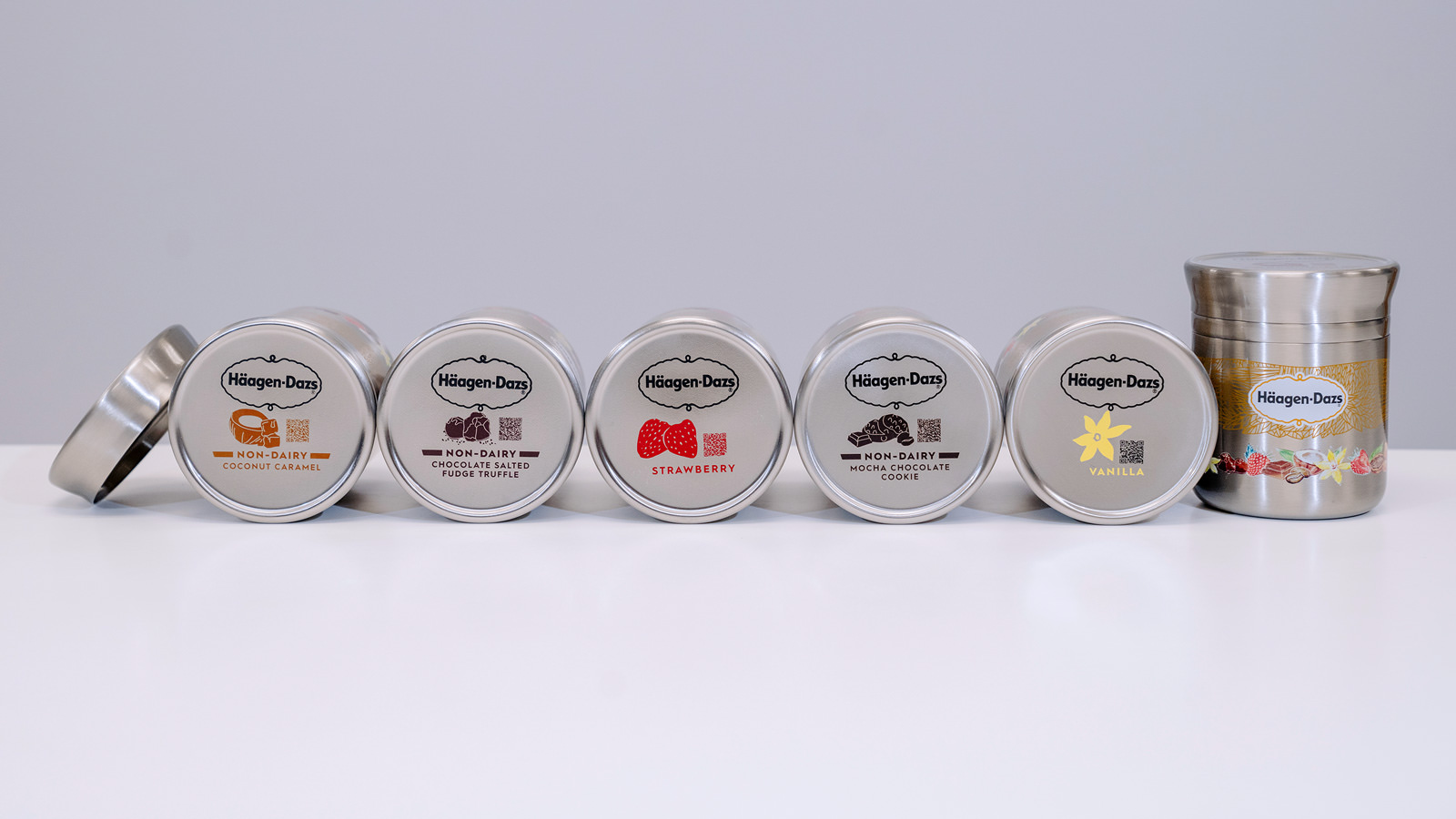 Loop
Loop
Posted: November 2019
These thoughtful, clever solutions go beyond materials and sourcing, tackling the challenge of waste from different angles.
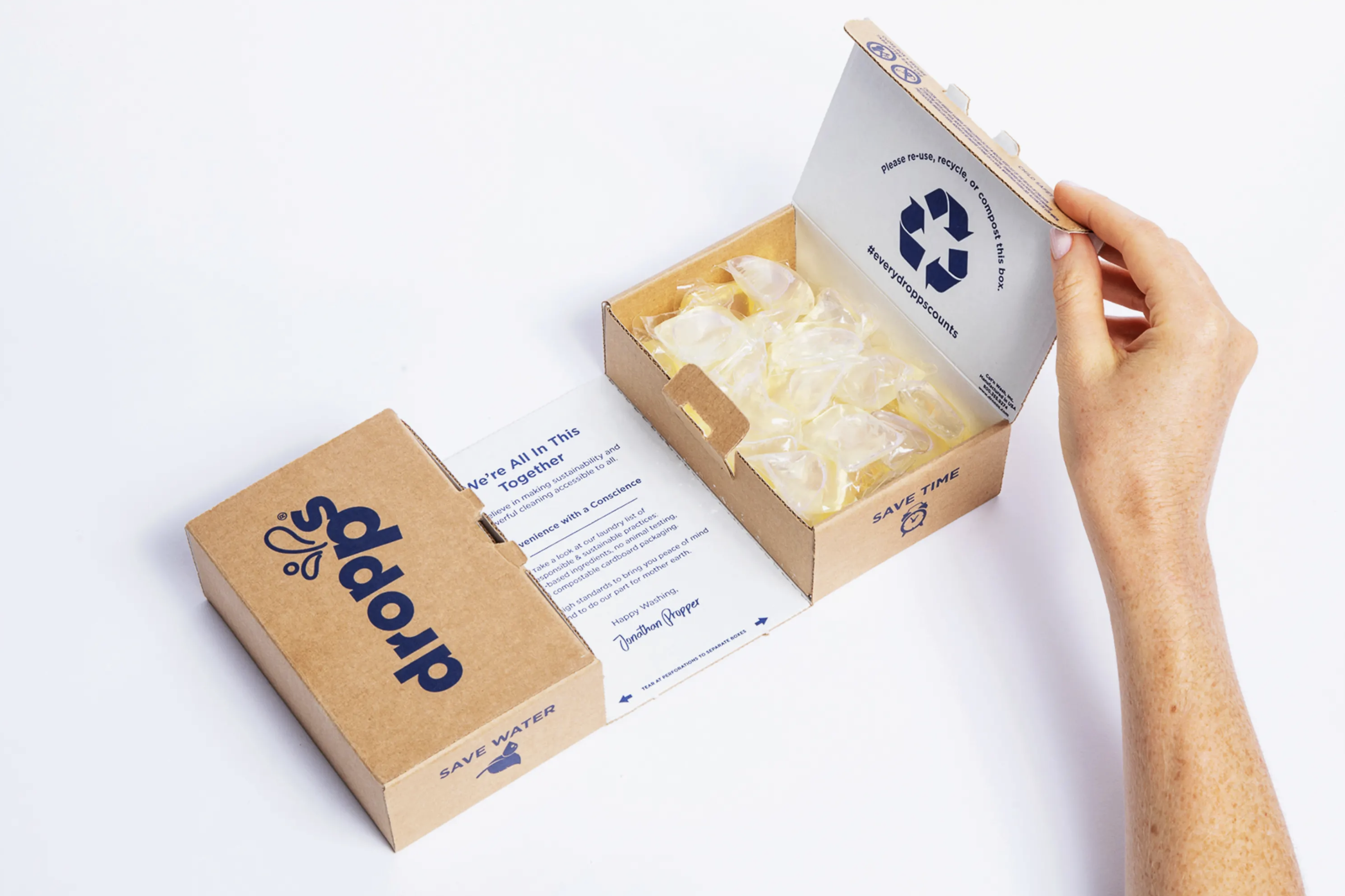
Create with less.
Dropps, the household detergent brand, created a simple and smart mailer by merging its shipping box and product packaging together. Rather than shipping a box within a box, Dropps pods are packed inside two twin cardboard boxes designed to fold into one another. Once folded, the singular box is sealed together with a simple shipping label. Not only does this design require less material, but its compact nature is more economical for shipping and leaves customers with less waste to deal with.
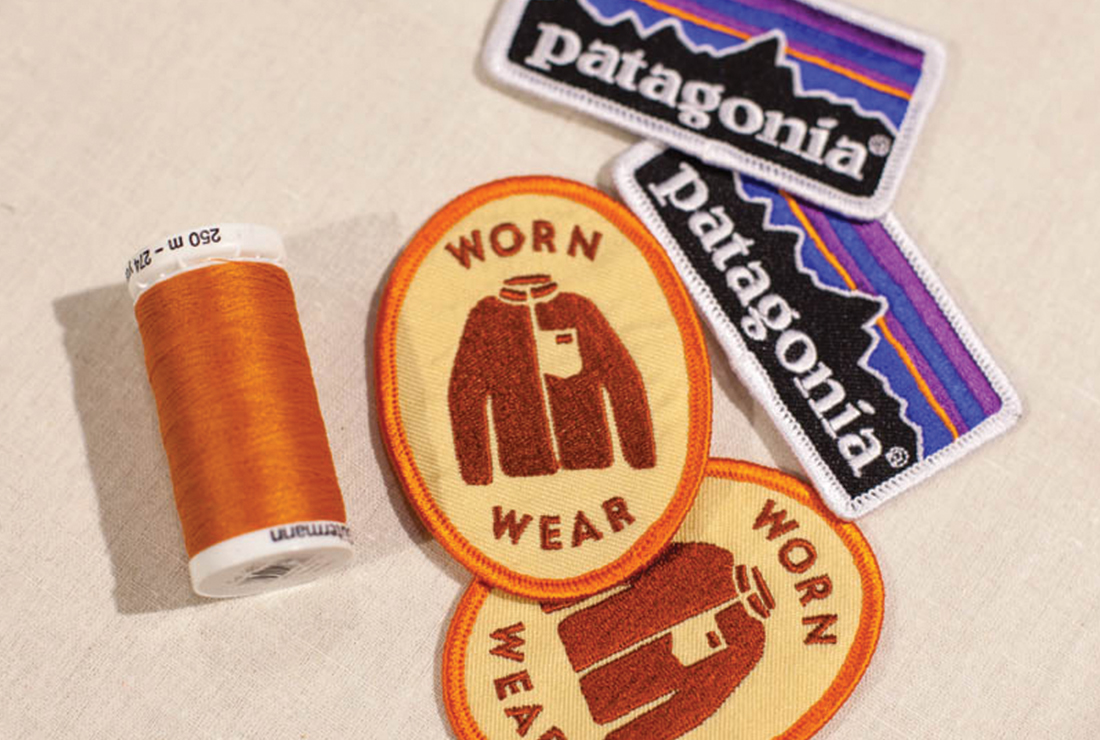
Create to last.
Patagonia is the gold standard when it comes to environmental ethics. The company recognizes the importance of creating high-quality, made-to-last goods. But when you’re out adventuring, gear can tear, break, and become damaged. Knowing many are in the habit of simply throwing things out, Patagonia encourages customers to send back goods for repair through their Worn Wear service. By extending the life of their gear, Patagonia helps cut down on carbon, water, and waste related to manufacturing brand-new products. “Drop it in the mail, not in a landfill,” they say.
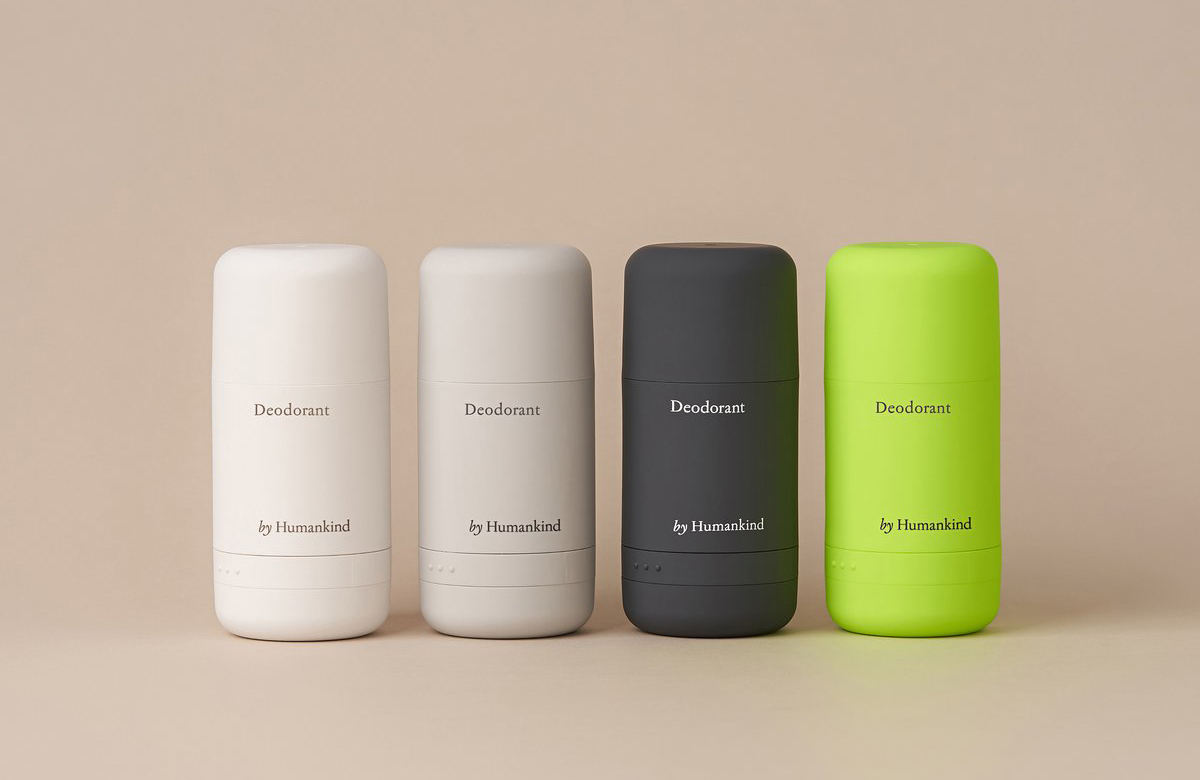
Create for reuse.
It’s a trip to see Häagen-Dazs and other household brands displayed in durable packaging. Thanks to Loop, major brands like Nestlé and Unilever are reimagining their product packaging to be reused rather than tossed.
Described as a modern “reboot of the milkman,” Loop delivers everyday products to your door in durable, reusable packaging. Once you’re done with the products, they’ll be picked up, washed, refilled, and shipped to another customer. While this system does require a lot of shipping, it is encouraging to see large corporations expressing interest in more sustainable solutions.
Smaller companies are adopting reusable packaging too. By Humankind, shown here, sells reusable dispensers with their deodorant. When your deodorant runs out, you can hang onto the dispenser and just buy the refill.
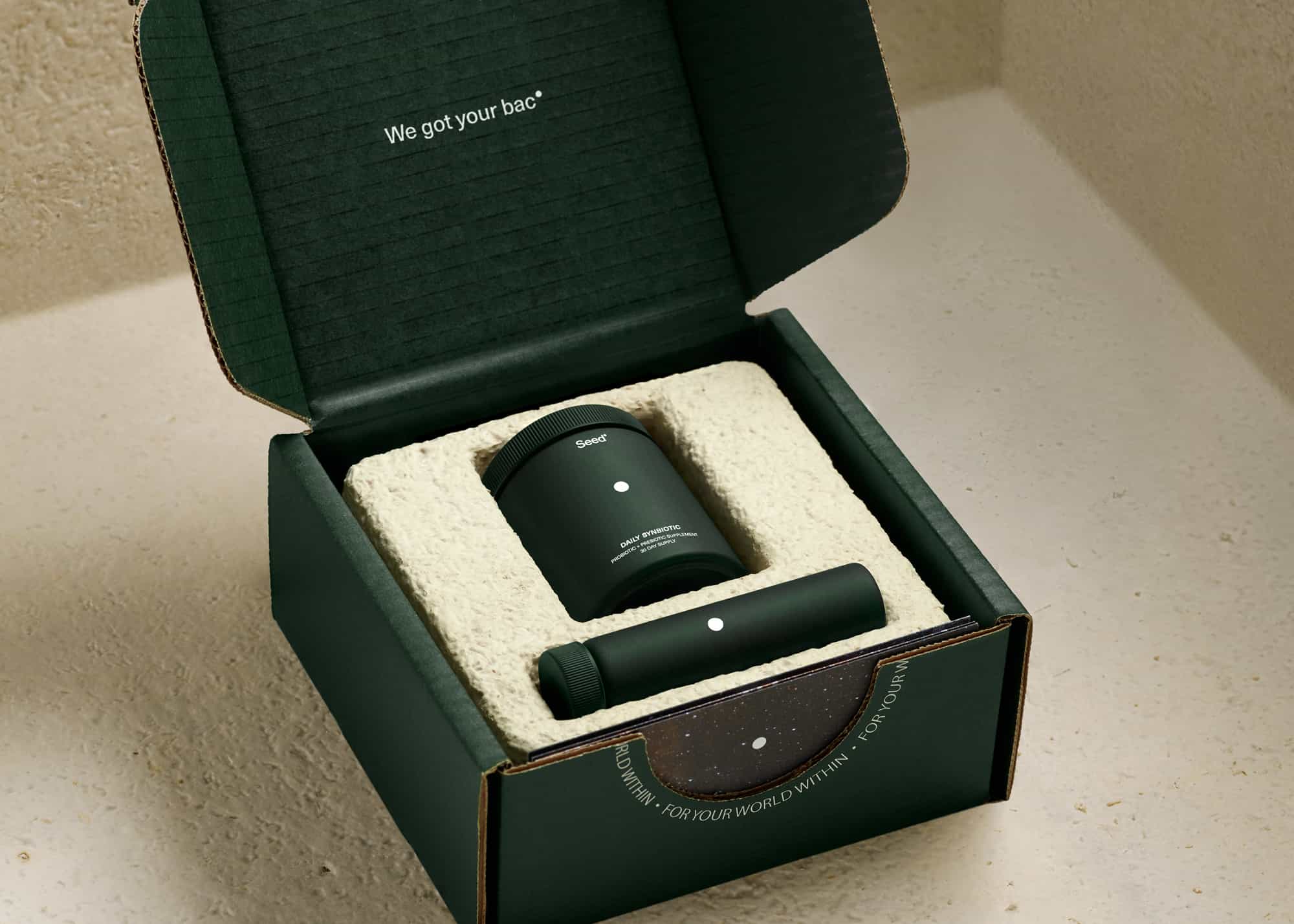
Create to nourish.
This intention captures what’s wonderful about compostable material. When designed to break down in the right conditions, compostable products or packaging can, in time, become nutrient-rich matter that improves and fertilizes soil.
Seed, the probiotic supplement company, understands the magic of bacteria. Partnering with Ecovative Design, Seed’s packaging is made with mushrooms and is 100% compostable. With the ability to break down in just 30 days, what was simply packaging will not only return to earth, but enrich it.
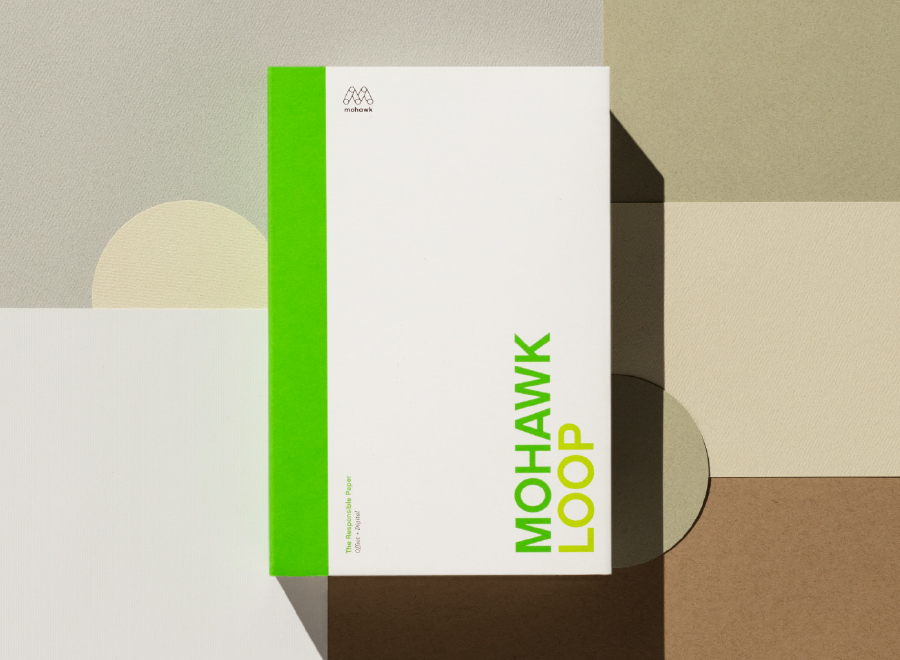
Create with waste.
We’re learning just how many recycling programs worldwide are flawed. But that doesn’t mean there isn’t value in recycling as a whole. It prevents us from drawing upon the planet’s virgin resources, which is especially important when those resources are nonrenewable.
Mohawk Paper understands the importance of this. Their Loop collection features a dozen beautiful, colored paper stocks, all made with between 50-100% post-consumer recycled fiber. By doing so, Mohawk turns “waste” back into a valuable product and reduces our reliance on virgin paper pulp from forests. Yes, trees are renewable, but there are undoubtedly benefits to taking pressure off of these important, slow-growing plants.

Beyond recycling, there’s a wealth of natural materials that are typically considered waste. A trip to the grocery store shows how simple materials like corn husks and banana leaves are used as packaging.
Some additional tips for creating responsibly:
1. Give customers a choice.
Consider giving customers the option to opt out of additional packaging. You might be surprised to see how many are happy to go without it.
2. Provide disposal clarity.
With curbside composting on the rise, it’s more important than ever to clearly state “compostable” on packaging. It’s easy for customers to mistake bioplastic for traditional plastic. When they do, recycling streams become contaminated. By clearly labeling a package as “compostable” you’re also helping the waste management companies; as they sort through waste, it minimizes the chance of a bioplastic package being culled out.
When it comes to recycling, the same applies; make it as clear as possible. It’s tempting to slap a “please recycle” note on your packaging, but make sure to do your homework; your packaging might not be universally recyclable (hello, Tetra Pak). Consider using How2Recycle to give customers accurate information.
3. Consider proximity.
If you know that 90% of your customers will be in California, for example, consider producing your product and packaging within the state. Doing so minimizes the environmental footprint associated with transportation. The same can be said for raw materials used. Consider sourcing your paper, cotton, what-have-you, as close to your customers and manufacturing site as possible.
4. Keep learning.
Sustainability is incredibly complex, but don’t let that prevent you from making small, initial steps. Learn about materials and certifications, become familiar with your local waste management facility, and keep your eyes peeled for new developments. There’s a surge of innovation happening in this space. It’s fast moving, and the best thing we can all do is tune in.
5. Lastly, do it because you should.
Thanks to consumer demands, companies big and small are hurrying to adopt more sustainable practices. While it’s exciting and encouraging to watch, our hope is that this is a long-lasting shift rather than a momentary trend. If our true goal is to exist more harmoniously with the planet, then let’s do it not for the marketing angle or the press headline, but because all life on Earth needs us to.
Next article:
Composting & Bioplastics: Why it’s so Complex
Composting & Bioplastics:
Why it’s so Complex
Companies are racing to create new bioplastics. But are our waste systems ready for them?

Posted: November 2019
If you live in the U.S. and have curbside composting, guess what? You’re one of the lucky few. That green bin you roll to the street is a rarity in this country. A nationwide survey by BioCycle in 2017 found 5.1 million households had access to composting through their local municipalities. That might sound like a lot until you realize that’s only about 3% of Americans. While that number has likely increased in the last couple of years, we still have a long way to go.
At its root, compostable material is a fantastic idea. When renewable resources are carefully used to create a material that’s designed to later break down and nourish soil, you have a circular system; waste becomes a resource once again. It’s this regenerative quality that makes bioplastic and other types of compostable packaging such an exciting alternative to traditional plastic. But it gets complicated. Fast.
︎ Side note: We won’t dive into plastic pollution here. But if you’re asking yourself, “What’s the big deal?” we’d recommend pausing to watch these two videos or checking out A Plastic Planet.
What is bioplastic?
It’s any biodegradable “plastic” made from plants or other bio-materials, typically from plants that regenerate quickly and are cheap to produce, like corn and sugarcane. If you’ve come across a seemingly normal piece of plastic that’s labeled PLA (for polylactic acid), that’s actually a type of bioplastic and one of the most common.
In order for bioplastics to effectively break down, they need certain conditions related to heat and humidity. Tossing last night’s burrito bowl into your backyard or your even home composter will likely leave you disappointed months later. And this is why curbside composting is so important; many, but not all, industrial facilities can break down even some of the most rigid bioplastics.
A few things tend to happen:
When bioplastics end up landfills, they typically don’t break down due to the fact that heat and humidity requirements aren’t met. If some do break down, they then emit methane gas into the environment because they’re essentially organic matter. As undesirable as that sounds, it’s unfortunately the better route when compared to options two and three.
When it comes to recycling, it’s incredibly easy for people to mistake bioplastic for regular plastic. Tossing it into the recycling bin seems simple enough, but it contaminates the recycling stream and creates big problems for the waste management companies.
And lastly, our third option, littering, is of course undesirable. Aside from the obvious reasons, rigid bioplastics like PLAs don’t actually break down in nature, not even in the ocean.
At its root, compostable material is a fantastic idea. When renewable resources are carefully used to create a material that’s designed to later break down and nourish soil, you have a circular system; waste becomes a resource once again. It’s this regenerative quality that makes bioplastic and other types of compostable packaging such an exciting alternative to traditional plastic. But it gets complicated. Fast.
︎ Side note: We won’t dive into plastic pollution here. But if you’re asking yourself, “What’s the big deal?” we’d recommend pausing to watch these two videos or checking out A Plastic Planet.
A Brief History of How Plastic Has Changed Our World, National Geographic ︎
The New Plastic Economy, Ellen MacArthur Foundation ︎
What is bioplastic?
It’s any biodegradable “plastic” made from plants or other bio-materials, typically from plants that regenerate quickly and are cheap to produce, like corn and sugarcane. If you’ve come across a seemingly normal piece of plastic that’s labeled PLA (for polylactic acid), that’s actually a type of bioplastic and one of the most common.In order for bioplastics to effectively break down, they need certain conditions related to heat and humidity. Tossing last night’s burrito bowl into your backyard or your even home composter will likely leave you disappointed months later. And this is why curbside composting is so important; many, but not all, industrial facilities can break down even some of the most rigid bioplastics.
What happens to bioplastic if composting isn’t available?
A few things tend to happen:
1. We toss it into the garbage.
2. We accidentally toss it into recycling.
3. We litter.
When bioplastics end up landfills, they typically don’t break down due to the fact that heat and humidity requirements aren’t met. If some do break down, they then emit methane gas into the environment because they’re essentially organic matter. As undesirable as that sounds, it’s unfortunately the better route when compared to options two and three.
When it comes to recycling, it’s incredibly easy for people to mistake bioplastic for regular plastic. Tossing it into the recycling bin seems simple enough, but it contaminates the recycling stream and creates big problems for the waste management companies.
And lastly, our third option, littering, is of course undesirable. Aside from the obvious reasons, rigid bioplastics like PLAs don’t actually break down in nature, not even in the ocean.
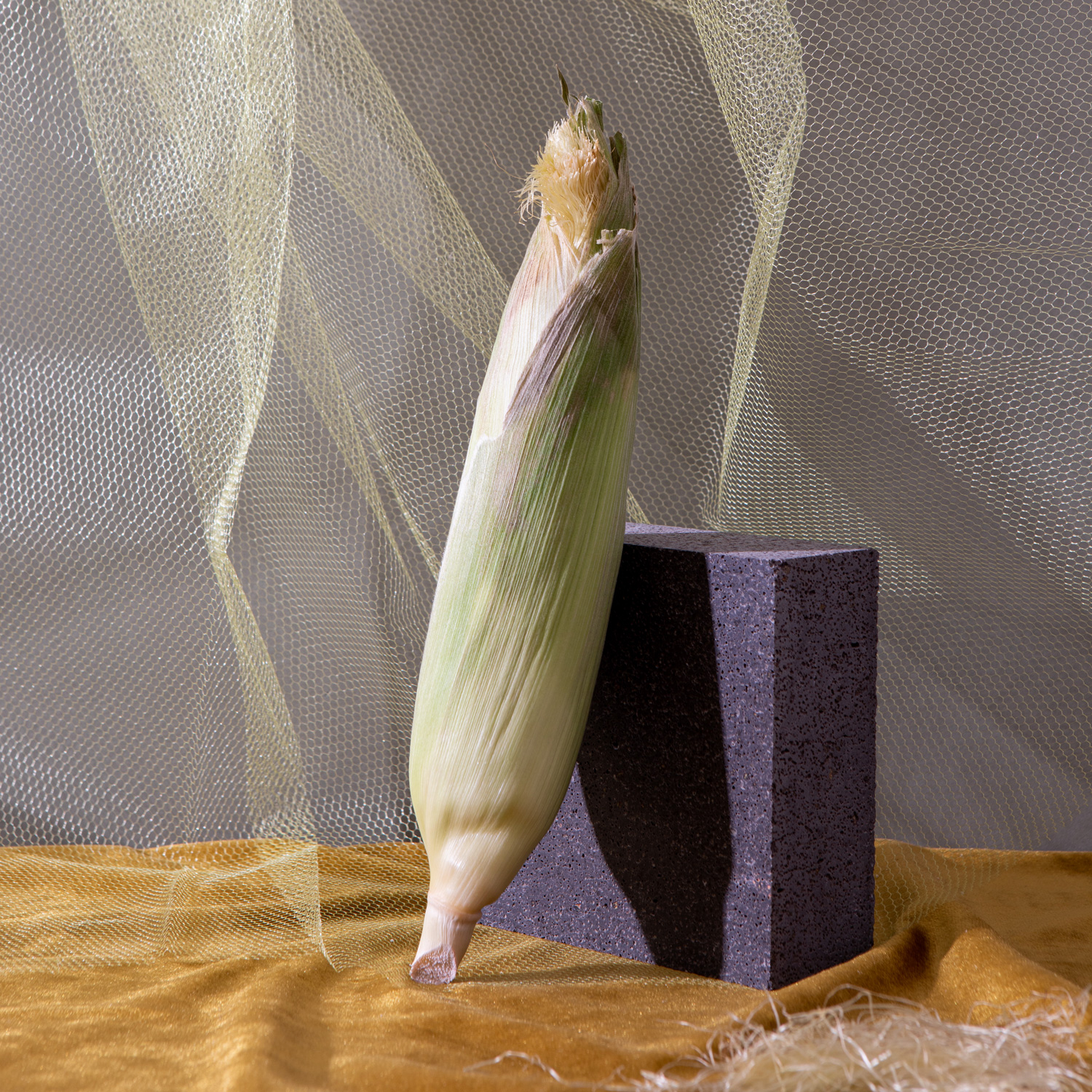
It gets more complex.
The challenges of bioplastics don’t end there (sorry, I know). In short, other aspects that give the environmentally-aware concern are:1. Bioplastics that rely heavily on crops like corn and sugarcane take up farming land that could otherwise be used for food. That’s bad news, as climate change jeopardizes the planet’s food sources.
2. When it comes to corn and sugarcane, GMO crops are often used, which can translate to heavy, detrimental fertilizer and pesticide use.
3. Lastly, there have been some recent, scary discoveries of harmful chemicals in biodegradable to-go containers. It has us wondering what might be discovered in future, popular bioplastics.
Hang in there.
If you’ve made it this far and are feeling thoroughly discouraged, we get it. It’s inevitable to hit roadblocks when trying to make big change. We, as a species, have become addicted to petroleum-based plastic, and it will take a great deal of creativity, public policy, and human psychology to find a way out. But many great minds around the world are working hard at it, and we, as individuals, designers, and business owners can stay informed and vote individuals into office who will prioritize the environment.
How to source bioplastic:
If opting for bioplastic packaging, there are some simple steps you can take to minimize negative side effects:
1. Consider using a bioplastic from highly renewable plant sources, like hemp, which requires less water than corn, or algae and seaweed, which are both relatively easy to grow.
2. If using a corn or sugarcane-based bioplastic, look for a non-GMO option.
3. Ensure the packaging can safely and successfully break down in composting facilities by looking for the ASTM D6400 certification (or EN 13432 in the EU). Unfamiliar with those certifications? Learn more here.
4. If your packaging is certified Home Compostable, that’s even better; if it can break down in the backyard, it can break down at a facility.
5. Clearly label “compostable” on the packaging to reduce the chance of recycling contamination.
Lastly, know that the world of bioplastics is moving quickly. New, innovative solutions will be regularly coming to the market, and we’ll do our best to keep you informed along the way.
Next:
Decoding Paper Recycling
Decoding Paper Recycling
Paper might be the most widely recycled material, but there’s no one-size-fits-all approach to giving it a second life. To simplify matters, we’re breaking down what you need to know.
Posted: June 2020
On average, a piece of paper can be recycled seven times before its fibers are too short for reuse. That creates a lot of opportunity for recovered material, emphasis on the “opportunity”—certain types of paper will more reliably get shredded, pulped, bonded, and made new again than others. Newsprint, for example, can almost always be recycled; wallpaper and pizza boxes cannot.
When paper does get recycled, the process benefits the earth in more ways than one. There are the simple facts, that less virgin material will be taken from commercial forests and less space used in landfills. But recycling paper also supports carbon sequestration, because it means less of the carbon that’s stored in paper fibers will get released back into the atmosphere upon degradation. Using recyclable paper, and making it easy for customers to recycle the paper they get from brands, feeds into a bigger picture of sustainable commerce.
To take some of the guesswork out, check out our list of recyclable (or compostable) paper products. To learn more, read on.
Step 1:
As previously mentioned, not every iteration of a paper product can head to a recycling plant and get mulched into a new product. (It’s also worth noting that if any paper product gets contaminated with food, oil, grease, or liquids, it’s disqualified from recycling.) But it is possible to make an educated guess on whether you can, cannot, or can only sometimes recycle certain types of paper.
Yes, you can usually recycle...
Sometimes you can recycle...
No, you typically cannot recycle...
Step 2:
Besides choosing materials from the “Yes, you can usually recycle” category, brands can also select paper that’s already gone through the recycling process. It doesn’t need to be fully recycled to make a difference: Using paper stock with as little as 30 percent post-consumer waste means your company relies less on virgin wood and helps to divert waste from landfills. It’s a step towards a circular economy.
Brands can also leverage package design to help customers responsibly dispose of packaging. For instance, Lumi’s ID system prints QR codes onto packaging; when a customer scans it and enters a zip code, the Lumi app surfaces up-to-date information on how and where to recycle the box or mailer. Likewise, How2Recycle’s labels take the confusion out of recycling iconography, replacing it with actionable instructions for consumers.
There are other, simpler ways to stay informed. Every state and municipality follows different waste management policies, and scrap import policies and market demand determine recycling practices. Waste Dive’s recycling-centered news site lets you search by state to scan recent changes to recycling programs. To learn about city-specific curbside pickup programs, search Earth911. And remember, municipalities that don’t offer curbside pickup for homes or businesses may still have drop-off sites that accept recyclables.
Extra Credit:
When paper arrives at a sorting facility, it gets graded and then forwarded onto other, more specific recycling plants. For instance, newsprint is lighter and therefore a different grade than heavier printer paper, and therefore may have a different buyer.
Paper then gets shredded and mixed with a chemical solution to break down the fibers, turning the remaining pulp into a slurry, oatmeal-like solution. Machinery removes contaminants (like staples, not food), and another chemical solution strips out inks. This new, clean pulp get pumped into a paper machine and steam rollers. Once it’s dry, flat, and smooth, it’s on its way to a new life as rolls and sheets of paper.
The more you know, the more powerful your decisions can be.
Next:
Literacy Library: Materials & Terminology
When paper does get recycled, the process benefits the earth in more ways than one. There are the simple facts, that less virgin material will be taken from commercial forests and less space used in landfills. But recycling paper also supports carbon sequestration, because it means less of the carbon that’s stored in paper fibers will get released back into the atmosphere upon degradation. Using recyclable paper, and making it easy for customers to recycle the paper they get from brands, feeds into a bigger picture of sustainable commerce.
To take some of the guesswork out, check out our list of recyclable (or compostable) paper products. To learn more, read on.
Step 1:
Which Kinds of Paper Can You Recycle?
As previously mentioned, not every iteration of a paper product can head to a recycling plant and get mulched into a new product. (It’s also worth noting that if any paper product gets contaminated with food, oil, grease, or liquids, it’s disqualified from recycling.) But it is possible to make an educated guess on whether you can, cannot, or can only sometimes recycle certain types of paper.Yes, you can usually recycle...
- Newsprint
- Flattened cardboard (don’t worry about packing tape; most recycling plants will remove it)
- White and pastel-colored printer paper
- Paper with metallic foil stamping
- Paper with staples or envelopes with windows (equipment at recycling plants will remove these)
- To-go coffee cup sleeves
Sometimes you can recycle...
- Glossy paper from magazines and catalogs
- Shredded paper
- Sticky notes
- Gift wrap (try crumpling it—if it’s too stiff it likely contains plastic or metal and can’t be recycled)
- Paper printed with toner
No, you typically cannot recycle...
- Laminated paper
- Neon, dark, or otherwise heavily saturated papers (these inks will compromise the recycling process)
- Household and hygiene products like toilet paper, tissues, and paper towels
- Wax- or foil-lined products such as disposable coffee cups or takeout containers
- Wallpaper
- Pizza boxes
- Egg cartons (compost these!)
Step 2:
What Can Brands Do?
Besides choosing materials from the “Yes, you can usually recycle” category, brands can also select paper that’s already gone through the recycling process. It doesn’t need to be fully recycled to make a difference: Using paper stock with as little as 30 percent post-consumer waste means your company relies less on virgin wood and helps to divert waste from landfills. It’s a step towards a circular economy.Brands can also leverage package design to help customers responsibly dispose of packaging. For instance, Lumi’s ID system prints QR codes onto packaging; when a customer scans it and enters a zip code, the Lumi app surfaces up-to-date information on how and where to recycle the box or mailer. Likewise, How2Recycle’s labels take the confusion out of recycling iconography, replacing it with actionable instructions for consumers.
There are other, simpler ways to stay informed. Every state and municipality follows different waste management policies, and scrap import policies and market demand determine recycling practices. Waste Dive’s recycling-centered news site lets you search by state to scan recent changes to recycling programs. To learn about city-specific curbside pickup programs, search Earth911. And remember, municipalities that don’t offer curbside pickup for homes or businesses may still have drop-off sites that accept recyclables.
Extra Credit:
Understanding the Paper Recycling Process
When paper arrives at a sorting facility, it gets graded and then forwarded onto other, more specific recycling plants. For instance, newsprint is lighter and therefore a different grade than heavier printer paper, and therefore may have a different buyer.
Paper then gets shredded and mixed with a chemical solution to break down the fibers, turning the remaining pulp into a slurry, oatmeal-like solution. Machinery removes contaminants (like staples, not food), and another chemical solution strips out inks. This new, clean pulp get pumped into a paper machine and steam rollers. Once it’s dry, flat, and smooth, it’s on its way to a new life as rolls and sheets of paper.
The more you know, the more powerful your decisions can be.
Next:
Literacy Library: Materials & Terminology
Written by Margaret Rhodes. Researched by Alice May Du.




